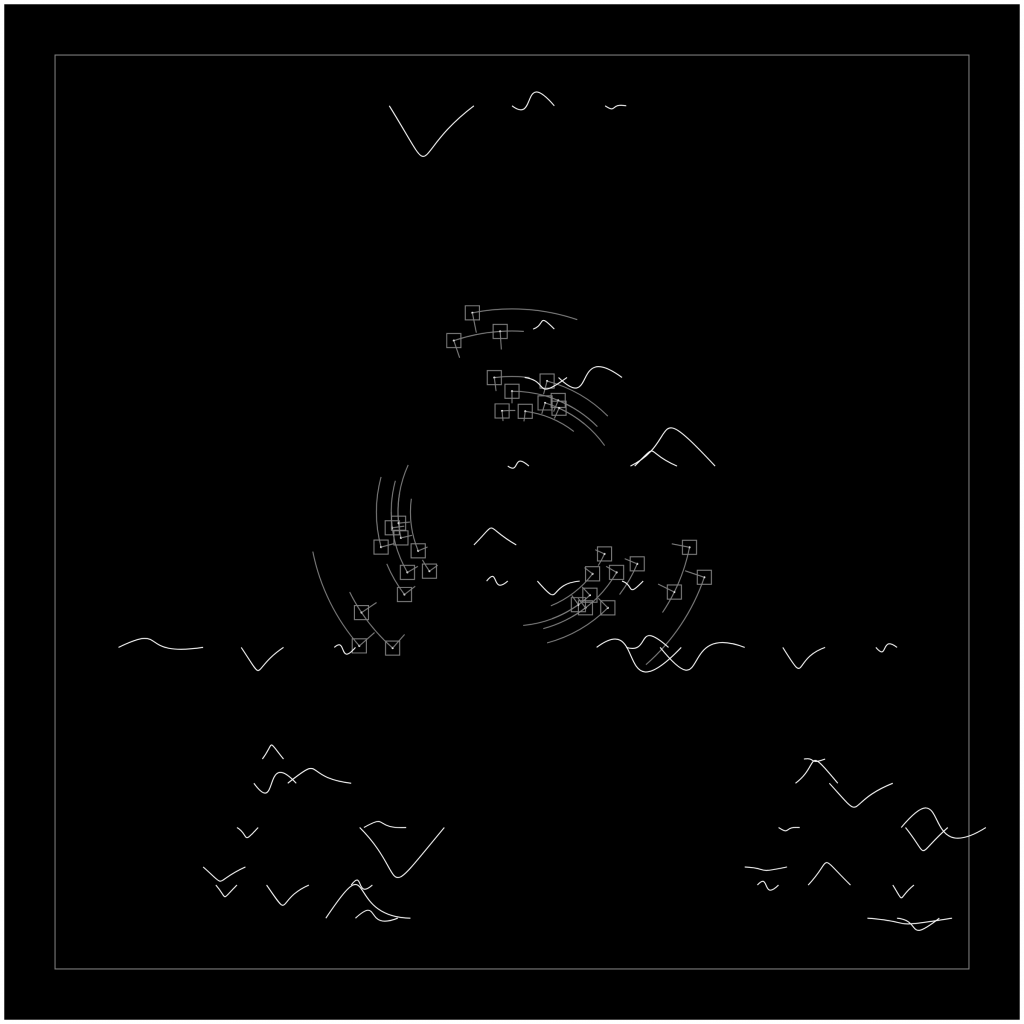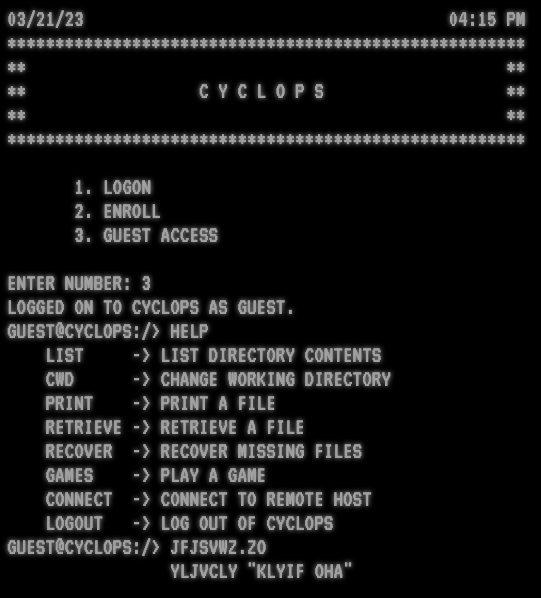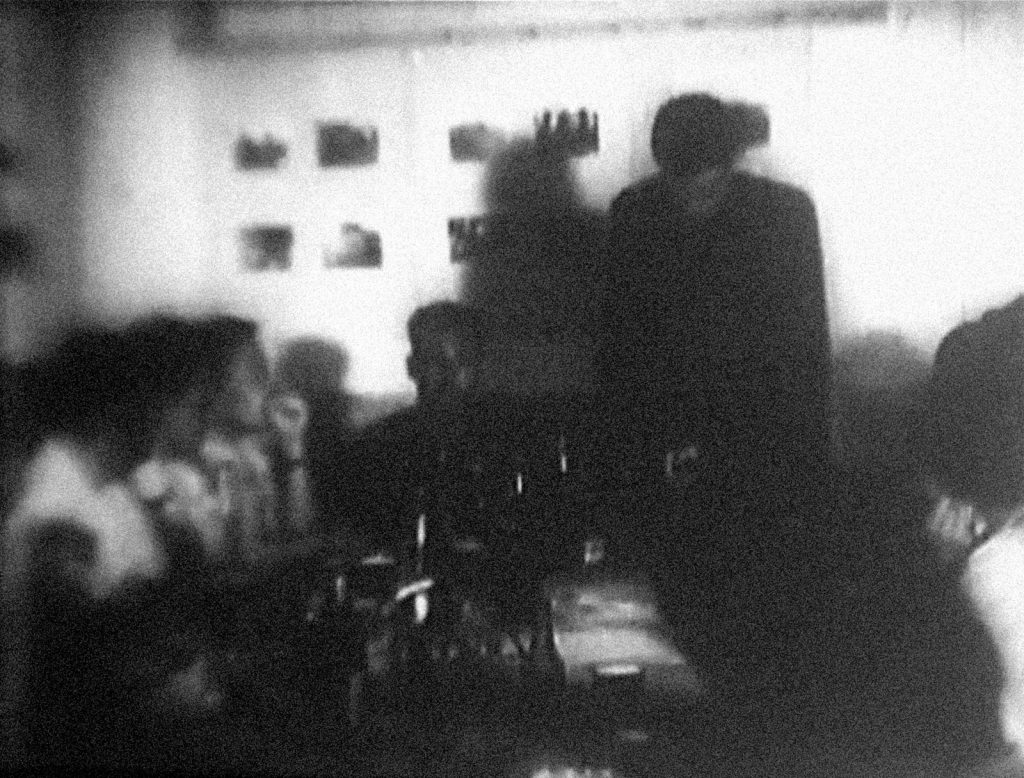If you like puzzles, cryptography and mystery, two new interconnected NFT and Web3 projects from artist Trevor Paglen will take you down fascinating rabbit holes in the history of mind control experiments, disinformation campaigns and psychological operations.
The NFT series, titled “PRELUDES,” is available on the Art Blocks platform, and combines graphic visual scores with simple compositions, reminiscent both of the algorithmically generated pieces by composers such as John Cage and Iannis Xenakis, as well as Haydn and Brahms, who encoded messages in their music.

Trevor Paglen, Preludes #89. Courtesy art blocks.
The description of the piece on Art Blocks includes the line “Pm fvb hyl ylhkpun aopz, fvb ohcl ahrlu fvby mpyza zalw puav h shynly dvysk”. Decoded, the message reads:If you are reading this, you have taken your first step into a larger world.
“They are musical puzzles,” Paglen told Artnet News yesterday at the Pace Gallery, where he just launched a solo exhibition. When you purchase the NFT, you then decode the message and enter the code to claim your prize – a vinyl LP – which contains further puzzles. The first track on the disc features a computer voice reading out a seemingly meaningless sequence of numbers: “65 76 69 82 84 32″, etc.
(Spoiler alert: with a hint from the artist, who pointed out that there are websites to help puzzlers decode cryptic texts, I was able to turn the message into a multi-word string, like “comet indigo starlight”.)
The puzzles on the vinyl LP, in turn, lead to “CYCLOPS“, A “speculative reality work” consisting of a central computer interface, presented by Art Blocks and Pace Verso, the gallery’s Web3 hub.

Trevor Paglen, CYCLOPS2023. © Trevor Paglen, Courtesy Pace Gallery.
“Welcome to the Viewtree Mountain Research Facility,” reads the interface, which indicates that the system was shut down in 1972 but reactivated in 1923 (presumably a legacy of a system well before the year 2000, which doesn’t had not scheduled dates starting on the 20th).
If “speculative reality” confuses you, the website explains somewhat helpfully: “Think of it as a new art genre that combines elements of alternate reality games (ARG) with aspects of historical “non-fiction”, experimental storytelling, and cooperative problem solving. It is intended to be played and experienced by self-organized groups of people working collaboratively.
To engage, participants start solving the puzzles featured on the tracks of the vinyl LP, or purchase a “Preludes” NFT, which earns puzzle solvers a registration code “CYCLOPS”. Or, the site says, “Find one. They’re hidden there. Go get it.
Eventually, and hopefully without spoiling anything, we can reveal that participants will find videos, documents and other materials that will take them further down the road.
“In terms of the narrative structure and content of ‘CYCLOPS,’ it lives in the world of MKUltra and mental experiments,” Paglen said, referring to a secret CIA program involving interrogation, brainwashing and psychological torture. Much of MKUltra’s evidence has been destroyed; the “evidence” that players find supersedes these documents.

Trevor Paglen, CYCLOPS2023. © Trevor Paglen, Courtesy Pace Gallery.
What led Paglen to enter the NFT field? He’s less interested in the new format for himself, he said, than for his enthusiasts.
“Here are 10,000 people all talking to each other,” he said, referring to the digital art fan community. “To build CYCLOPS, to play this game, you need 1,000 people talking to each other. NFT has a bunch of nerds hanging out on Discord servers. I was thinking about audiences in a different way.
“What I was asking was, ‘How do you make public art for people who live on the internet?'”
Follow Artnet News on Facebook:
Want to stay one step ahead of the art world? Subscribe to our newsletter to receive breaking news, revealing interviews and incisive reviews that move the conversation forward.
